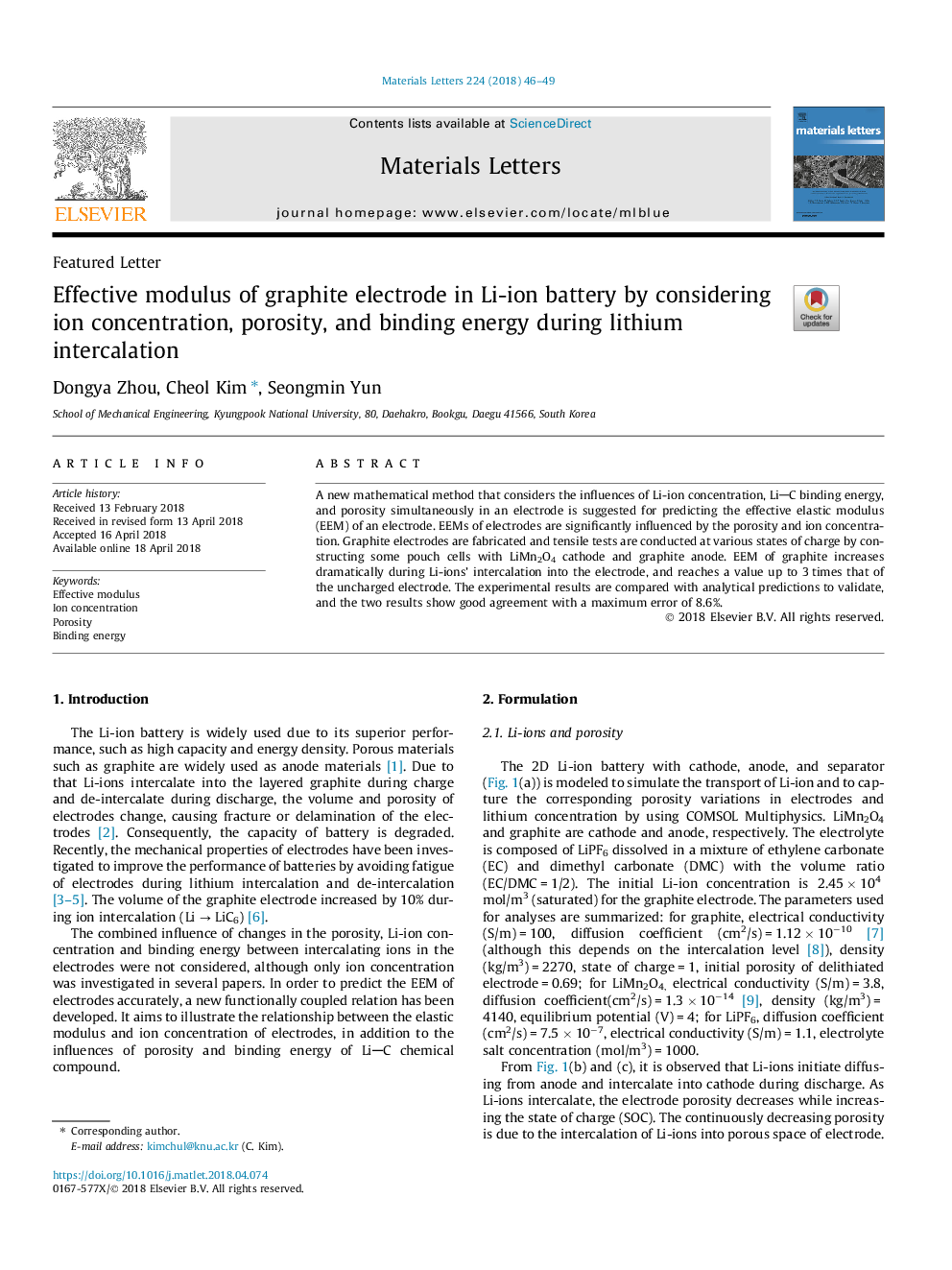| Article ID | Journal | Published Year | Pages | File Type |
|---|---|---|---|---|
| 8012927 | Materials Letters | 2018 | 4 Pages |
Abstract
A new mathematical method that considers the influences of Li-ion concentration, LiC binding energy, and porosity simultaneously in an electrode is suggested for predicting the effective elastic modulus (EEM) of an electrode. EEMs of electrodes are significantly influenced by the porosity and ion concentration. Graphite electrodes are fabricated and tensile tests are conducted at various states of charge by constructing some pouch cells with LiMn2O4 cathode and graphite anode. EEM of graphite increases dramatically during Li-ions' intercalation into the electrode, and reaches a value up to 3â¯times that of the uncharged electrode. The experimental results are compared with analytical predictions to validate, and the two results show good agreement with a maximum error of 8.6%.
Related Topics
Physical Sciences and Engineering
Materials Science
Nanotechnology
Authors
Dongya Zhou, Cheol Kim, Seongmin Yun,
